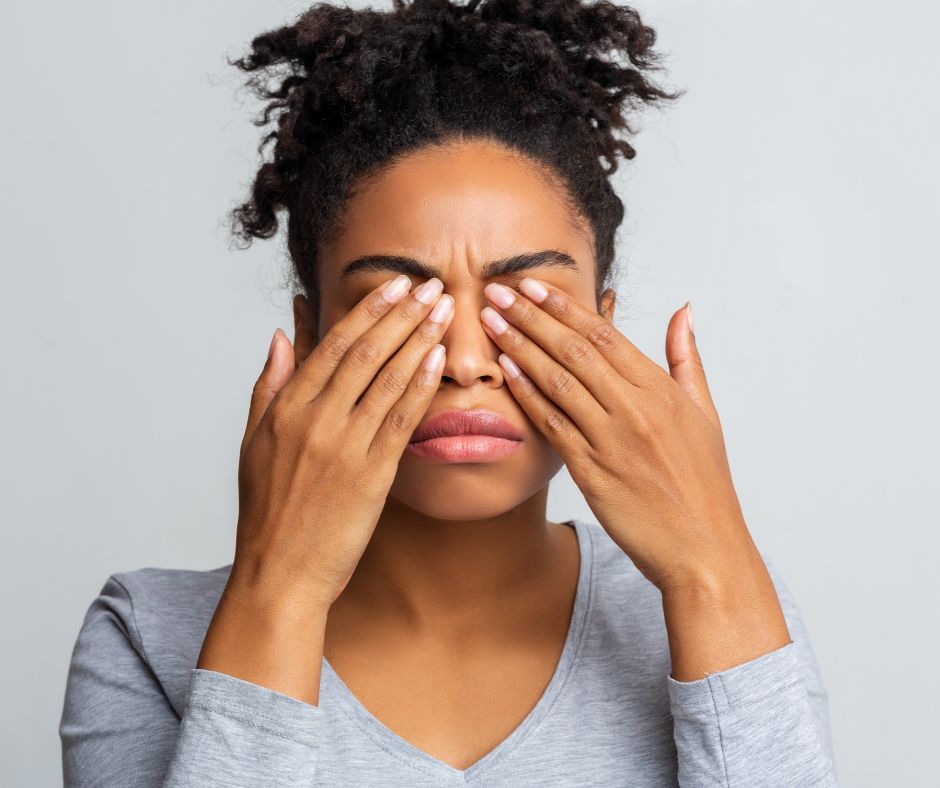Waking up to red, itchy eyes is always a pain. You may assume it’s your seasonal allergies acting up again, or you could wonder if you have a case of pink eye. Both are forms of conjunctivitis, and their similar symptoms can make the source hard to spot. But the underlying causes and preferred treatments are different, so distinguishing between the two is important for fast relief. Read on as we provide an eye-opening exploration of how to decide – is it pink eye or allergies?
What is Conjunctivitis?
Conjunctivitis is an inflammation of the transparent membrane (conjunctiva) that lines your eyelid and covers the white part of your eyeball. When small blood vessels in the conjunctiva become inflamed, they’re more visible, causing the white of your eye to appear reddish or pink.
There are several causes of conjunctivitis, including:
- Viral Conjunctivitis: This form is caused by a virus, like adenoviruses or the common cold. It usually occurs alongside or just after another viral infection.
- Bacterial Conjunctivitis: Caused by bacteria such as Staphylococcus aureus or Streptococcus pneumoniae, this type spreads through contact with someone who is already infected, such as by shaking hands or sharing cosmetics.
- Allergic Conjunctivitis: This form is triggered by exposure to allergens like pollen, dust, or pet dander. It is more common in people who have chronic seasonal or environmental allergies and tends to accompany other allergy symptoms.
Conjunctivitis is a common eye condition, affecting around 6 million people in the U.S. each year. Depending on the cause, conjunctivitis can be highly contagious and spreads easily in crowded areas like schools, airports, shopping malls, etc.
Pink Eye Signs and Symptoms
All forms of conjunctivitis, more commonly known as pink eye, share some hallmark symptoms. These include:
- Pink or red appearance
- Itchiness
- Watering
- Light Sensitivity
Despite similarities, each form of conjunctivitis has subtle differences that you can keep an eye out for. Depending on the cause of your condition, you may also experience:
Viral Conjunctivitis
- Thin, watery discharge
- Burning
- Increased tear production
- Swollen lymph nodes
Bacterial Conjunctivitis
- Soreness
- Thick white or yellow discharge (pus)
- Crusting or matting of the eye(s) overnight
Allergic Conjunctivitis
- Intense itchiness
- Puffy or swollen eyelids
- A gritty, scratchy feeling in the eye(s)
- Other allergy symptoms such as sneezing or runny nose
Pink Eye or Allergies: Spotting the Difference
Beyond direct symptoms, there are some other subtle differences that can help you determine the cause of your peeper problems. To seek out the source, consider the following:
- Which eye is inflamed? Allergies typically affect both eyes at once, while other forms of pink eye usually begin in just one eye before spreading to the other.
- How itchy is itchy? Allergic conjunctivitis is known to cause intense itching and a powerful urge to rub your eye. Viral and bacterial conjunctivitis are more likely to cause soreness and burning.
- Examine your eyelids. Allergies are more likely to cause swelling or puffiness in the eyelids than other forms of pink eye. Viral and bacterial infections tend to cause a sticky discharge that crusts overnight.
- Is anyone else infected? Viral and bacterial pink eye are both highly contagious and may spread to other members of your household. Allergic conjunctivitis is not contagious and cannot spread to other people.
Treatment Options
Pink Eye Treatment
Pink eye caused by a virus cannot be cured, but will usually resolve itself within 2-14 days. Bacterial conjunctivitis requires antibiotic eye drops prescribed by your doctor; if left untreated, permanent eye damage can occur. Warm compresses and artificial tears can help reduce discomfort.
Good hygiene practices, such as washing hands frequently and not sharing personal items like towels or pillows with others, can help prevent the spread of viral and bacterial conjunctivitis.
Allergies
Symptoms of allergic conjunctivitis can be treated with over-the-counter antihistamines in the form of pills, nasal sprays, or eye drops. Your doctor may also prescribe steroids or anti-inflammatory eye drops if symptoms are severe.
The most effective way to prevent allergic conjunctivitis is to avoid known allergy triggers. Sublingual allergy drops, like the ones compounded in-house at America’s Best Care Plus, can also provide lasting relief from allergy symptoms (including pink eye) by gradually teaching your body to tolerate allergens.
Whether it’s pink eye making an unwelcome appearance or allergies trying to crash your seasonal parade, understanding the signs and symptoms can lead to quicker relief. And when it comes to battling allergies, remember that America’s Best Care Plus has your back (and eyes).
Curious about how our sublingual allergy drops can change your allergy game? Visit us to learn more and start your journey toward clearer, happier eyes today!

